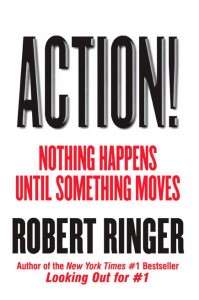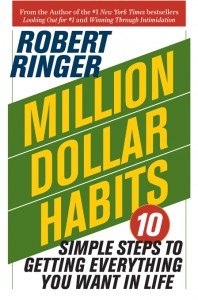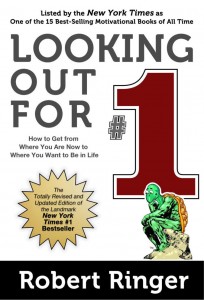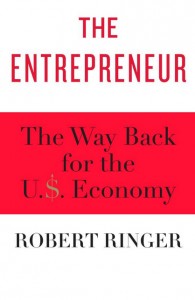The Thought-Reality Connection
Posted on February 11, 2015 by Robert Ringer
Motivational speakers and authors have long insisted that it’s possible to exert a great deal of control over your destiny by maintaining a positive mental attitude. Even though problems are an integral part of life, they believe that the key to success is how you react to those problems. So, are they right? Or is it all just a bunch of motivational hype?
When Napoleon said, in Think and Grow Rich, “Anything the mind can conceive and believe, it can achieve” and “When you’re ready for a thing, it will make its appearance,” he wasn’t just passing along some frivolous thoughts. These beliefs are based on centuries of empirical evidence drawn from human experience.
As the pace of scientific discoveries continues to increase, researchers have made dramatic strides in discovering the major role that the mind plays in determining results. Of particular interest is the years of extensive research done by the recently deceased Dr. Karl Pribram, a neurosurgeon who convincingly demonstrated that there is a direct correlation between what the mind visualizes and a person achievements.
Dr. Pribram’s Theory of Holographic Memory contends that the mind houses three-dimensional holographic images of what it envisions, which in turn stimulates the senses to translate those images into their physical, real-life equivalents. More precisely, when your mind believes something to be true, it stimulates your senses to draw to you the things, people, and circumstances necessary to convert the mental image of that thing into a physical reality.
Thus, there is nothing at all mystical about the power of the mind to influence a person’s destiny. On the contrary, it’s a phenomenon that is genuinely scientific. From my personal experience (and evolution), I long ago concluded that to achieve a genuine positive mental attitude (as opposed to the superficial rah-rah variety), it’s a wise investment of one’s time to study and learn about the visualization powers of the mind.
When I first read about Dr. Pribram’s research findings back in the late eighties, I was skeptical. But again, through my own experience, I have witnessed how the powers of the mind can, indeed, draw to a person the things, people, and circumstances necessary to convert his desires into results.
Based on the evidence, you might say that a good way to start getting what you want in life is to imagine that you already have it. For example, let’s go back to Napoleon Hill’s statement, “When you’re ready for a thing, it will make its appearance.”
Have you ever heard something for years, then suddenly the right person, in the right place, at the right time says it in just the right way, and you find yourself saying something like, “Wow, what a great thought!” Then a friend or spouse says, “But I’ve been telling you that for years, and you’ve never gotten excited about it before. What’s the big deal?”
The big deal was that prior to that time your mind was not ready to receive that particular information, because you didn’t really believe it was possible. Then, when it finally hit you like a sledgehammer, it was because you were at a point in your life when you were ready to hear it — and probably ready to absorb and act on it. Thus, it created the illusion that it had magically made its appearance at that particular moment.
But it wasn’t really magic at all. Rather, it was a result of your raising your awareness level and expanding what I like to refer to as your “mental paradigm.” I use the term mental paradigm to describe an imaginary box within your mind, a box that houses what you believe to be the world of the possible. Conversely, everything that lies outside the perimeter of that box represents what you believe to be impossible.
What determines whether something lies inside or outside of that box are your experiences, your environment, your knowledge, your wisdom — everything you’ve been exposed to throughout your life. And it’s the combination of what lies both inside and outside of this imaginary box that forms what is commonly known as your “system of beliefs.”
To the extent you accumulate a lot of usable knowledge and wisdom, not only will more possibilities lie inside the boundaries of your mental paradigm, the paradigm itself will expand; i.e., your mind will be more open to new ideas, new concepts, and new possibilities. On the other hand, to the extent you haven’t put forth a great deal of effort to increase your bank of knowledge and wisdom — through reading, learning from others, and, above all, firsthand experience — your mental paradigm will be much smaller.
Thus, it’s a positive cycle: The more knowledge and wisdom you have, the more likely you are to believe in your power to control your destiny; the more you believe you have the power to control your destiny, the more expanded your mental paradigm will become; and the more expanded your mental paradigm becomes, the more knowledge and wisdom you will accumulate.
We’re only into the second month of the new year, so it’s a good time to make a commitment to put a great deal of conscious effort into increasing your base of knowledge and wisdom — yes, in case you’re wondering, more effort than you put into your job or profession. Never forget that improving yourself is the absolute best investment of your time, because what you learn is an asset that can never be taken from you.
If you give this a sincere effort, you will be absolutely amazed at how your mental paradigm naturally expands and allows you to draw to you the things, people, and circumstances you need to achieve whatever it is you want in life. Trust me, it works.










